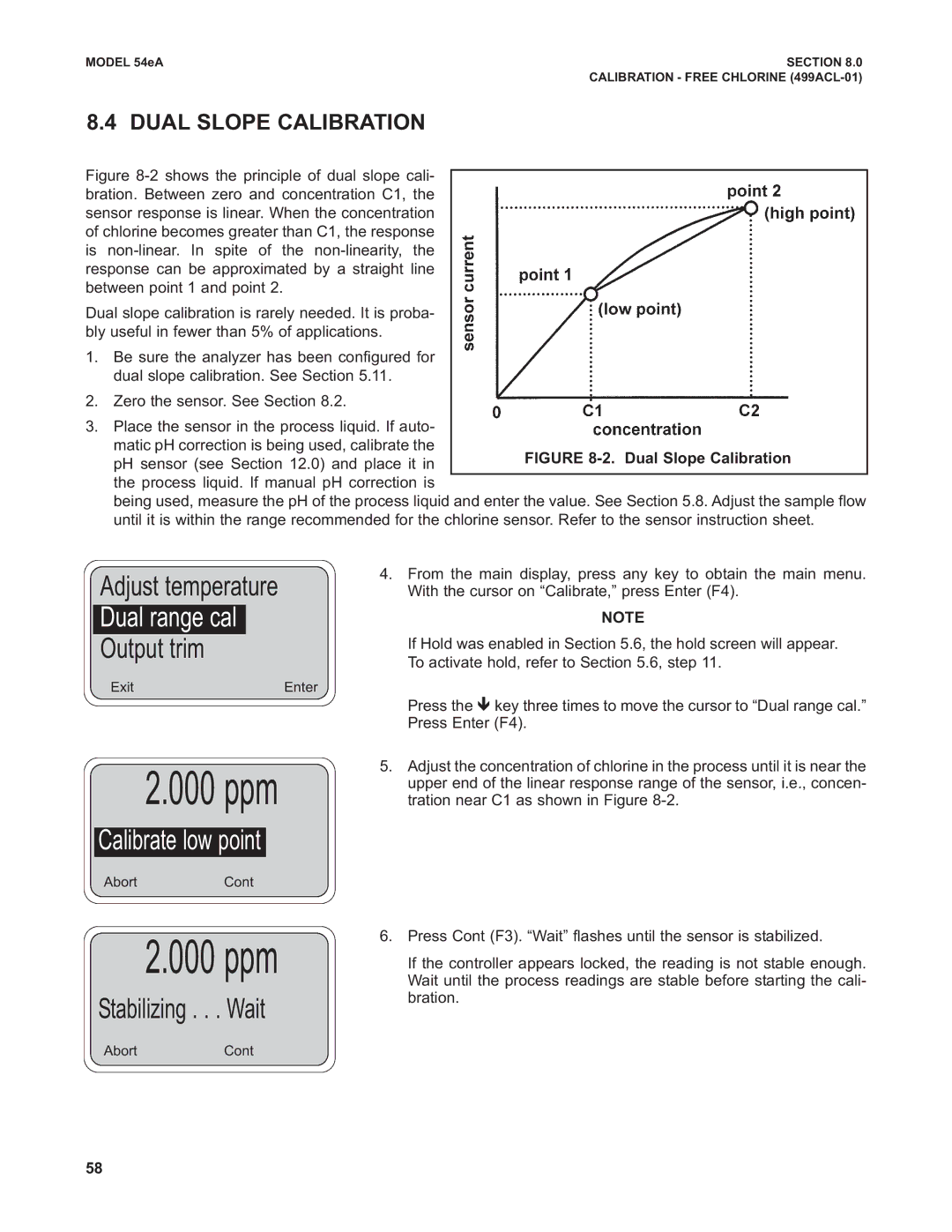
MODEL 54eA | SECTION 8.0 |
| CALIBRATION - FREE CHLORINE |
8.4 DUAL SLOPE CALIBRATION
Figure 8-2 shows the principle of dual slope cali- bration. Between zero and concentration C1, the sensor response is linear. When the concentration of chlorine becomes greater than C1, the response is non-linear. In spite of the non-linearity, the response can be approximated by a straight line between point 1 and point 2.
Dual slope calibration is rarely needed. It is proba- bly useful in fewer than 5% of applications.
1.Be sure the analyzer has been configured for dual slope calibration. See Section 5.11.
2.Zero the sensor. See Section 8.2.
3.Place the sensor in the process liquid. If auto- matic pH correction is being used, calibrate the
pH sensor (see Section 12.0) and place it in the process liquid. If manual pH correction is
being used, measure the pH of the process liquid and enter the value. See Section 5.8. Adjust the sample flow until it is within the range recommended for the chlorine sensor. Refer to the sensor instruction sheet.
Adjust temperature
Dual range cal
Output trim
ExitEnter
4.From the main display, press any key to obtain the main menu. With the cursor on “Calibrate,” press Enter (F4).
NOTE
If Hold was enabled in Section 5.6, the hold screen will appear. To activate hold, refer to Section 5.6, step 11.
2.000 ppm
Calibrate low point
Abort Cont
2.000 ppm
Stabilizing . . . Wait
Press the ê key three times to move the cursor to “Dual range cal.” Press Enter (F4).
5.Adjust the concentration of chlorine in the process until it is near the upper end of the linear response range of the sensor, i.e., concen- tration near C1 as shown in Figure
6.Press Cont (F3). “Wait” flashes until the sensor is stabilized.
If the controller appears locked, the reading is not stable enough. Wait until the process readings are stable before starting the cali- bration.
Abort Cont
58
